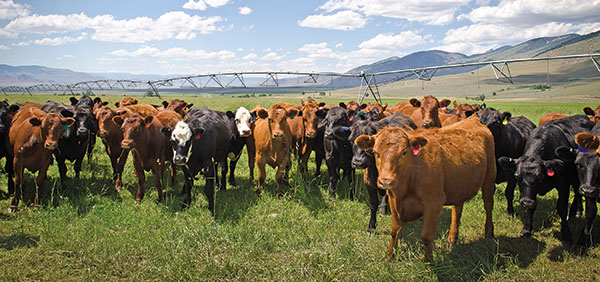Grass-fed faces growing pains |
| By Jesse Bussard |
|
|
|
The author is a freelance writer from Bozeman, Mont., and has her own communications business, Cowpunch Creative.  The fruit of opportunity couldn’t be riper for the picking in the grass-fed beef sector right now. Now a $2.5 billion industry, predictions from industry experts suggest within the next 10 years, grass-fed beef has the potential to make up at least 30 percent of all domestic beef produced. This growth will not come without challenges though. In the forage and grazing side specifically, a larger issue has become apparent. Forage finishers, highly-skilled graziers, are few and far between. Grazing expert Jim Gerrish explains not just any grazier can accomplish the results necessary to achieve the high degree of finish (such as fat and marbling) consumers expect. Finishing cattle on pasture requires a different paradigm of thinking than other types of grazing. Unlike maintaining cow-calf pairs or grazing stocker steers, the take-half-leave-half philosophy must be left behind. Instead, cattle being finished on grass must always have the selection opportunity to take the best feed. “Every pasture has some finishing quality feed in it, some growing quality feed, and then cow feed,” says Gerrish. “I’ve seen too many finishers trying to finish cattle on pasture that is too mature, too far gone.” Feed them right Gerrish is well-known for his work pioneering the use of management-intensive grazing and has worked with livestock graziers across the globe for the past 30-plus years. When finishing cattle, he notes, the focus must be on the amount of energy the animal is eating. “When pasture gets too mature, the amount of digestible energy, other than maybe 20 or 25 percent of that forage, is not adequate for finishing,” says Gerrish. The key instead, Gerrish says, is to move animals faster when pastures are in high Phase 2 of pasture growth, allowing them to only graze forage once. This is the period when pasture nutrient content and quality is at its highest and plant growth most efficient. To finish cattle successfully, Gerrish suggests graziers learn what types of animals work and how to graze them correctly. It is important not to get too focused on the animals though, he explains. “Get decent, functional pairing animals and then just really focus on your grass management,” says Gerrish. “You can get a functional animal for half the money or less than what superior seedstock are.” Ideally, optimal genetics and good grass management is the perfect mix, and when done properly, Gerrish says these two things will build on each other. Aside from production, location and types of forages used for grazing are also important things to consider when finishing cattle. In high elevation, arid climates like the ranch unit Gerrish manages near Patterson, Idaho, are ideal for perennial pastures. Using effective management and irrigation, Gerrish says he can get finishing rate of gains through the entire growing season. In places like the Southeast, producers may consider a cocktail mix of warm season annuals coupled with strategic irrigation to grow finishing-quality feeds through most of the season. Still, Gerrish indicates in any system there will be weak time slots when quality forage will not be available. In these cases, direct-cut silage is the only alternative forage that gives the same fat profile as what grazing green grass does. “If there is an area for more research, forage-finishing beef is it because just about every location is going to have those transitional periods that are weak,” says Gerrish. “We need to work on the forage options in those windows.” It is evident these issues will be tricky and complex to solve. Solutions will not happen overnight. If grass-fed beef’s market share is to grow to 30 percent, supply issues will also have to be addressed. Gerrish notes development of interregional marketing cooperatives has been one option discussed to maintain adequate supply across the country. This would mean focusing production in different regions, taking advantage of the grazing season in each area, in a means to supply grass-fed beef to areas which cannot produce it at that time of the year. However, says Gerrish. “We are not going to get 20 million head finished from people who are doing 23 or 38 head at a time, so that’s a limitation.” Instead of small-scale operations, Gerrish believes it will be larger outfits, those finishing 1,000 to 5,000 head at a time, who will lead the way to grass-fed’s increased market share. • This article appeared in the August/September issue of Hay & Forage Grower on page 18.Not a subscriber? Click to get the print magazine. |
